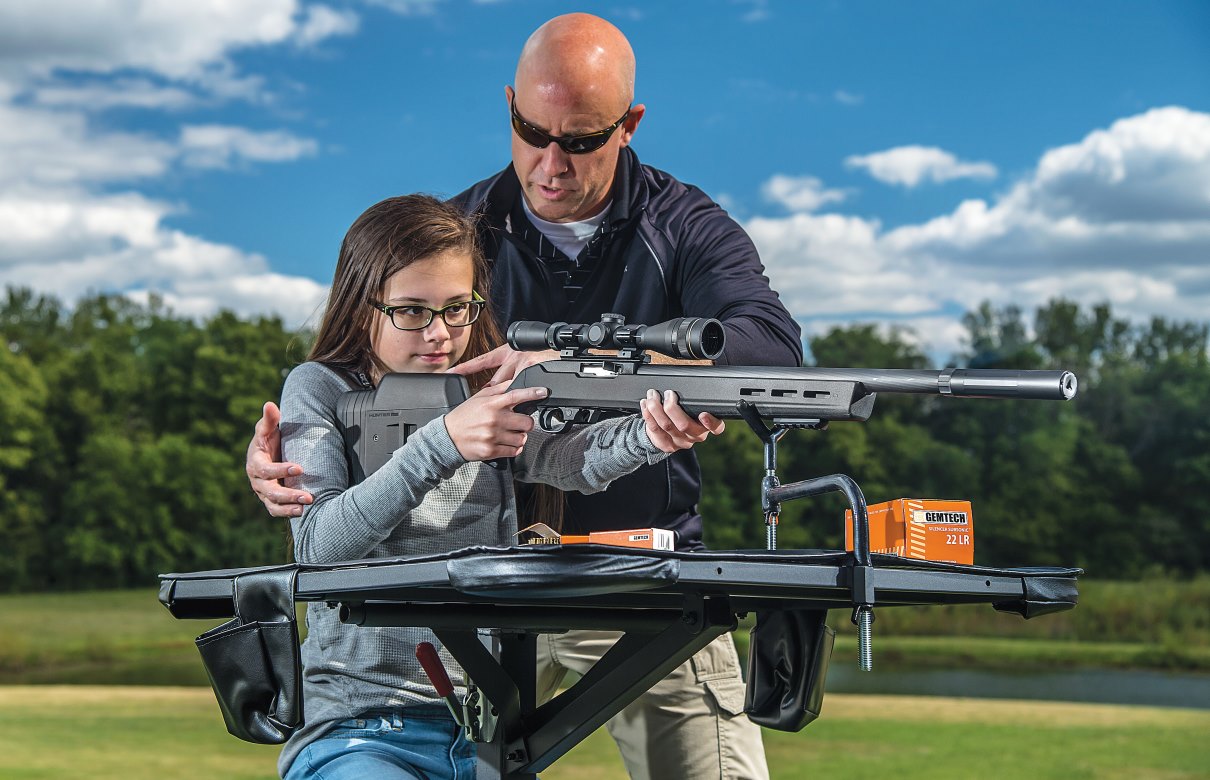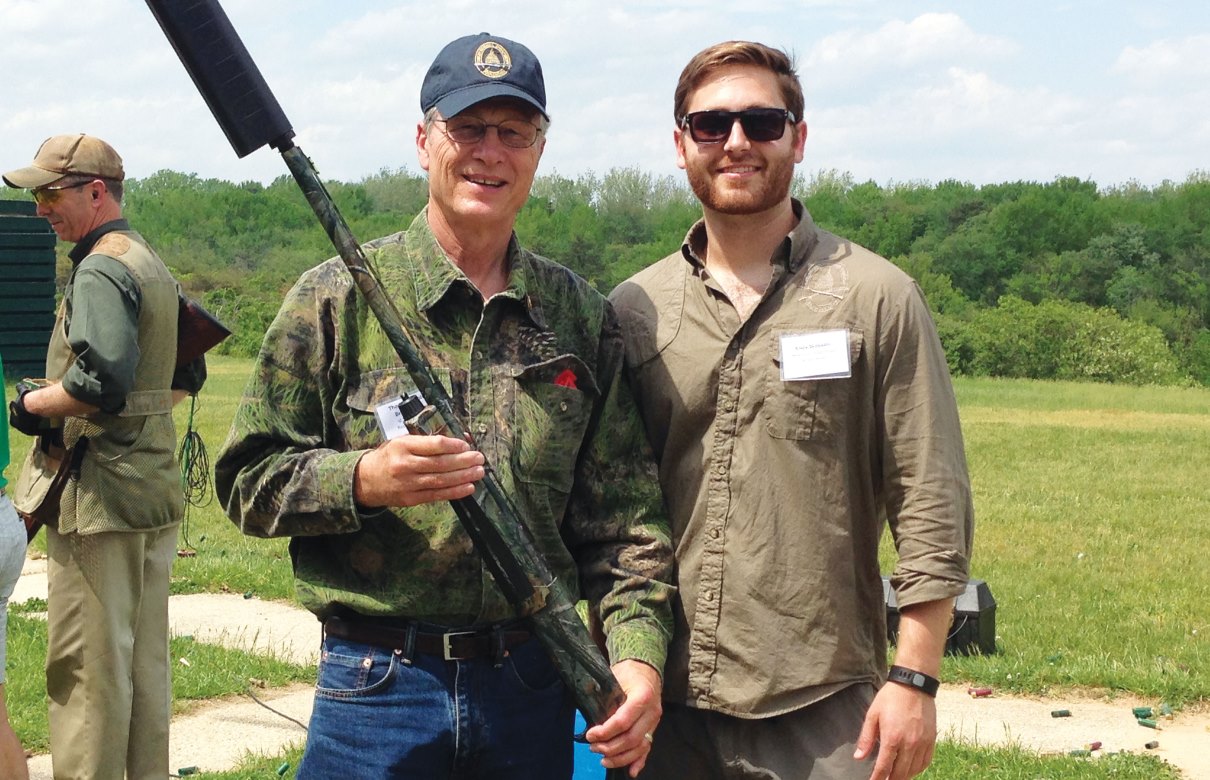The American Suppressor Association
By: Sean Utley
 (Photo courtesy of "Shooting Times")
(Photo courtesy of "Shooting Times")
Fighting for your right to remain silent
You may not know it, but there are some covert operations going on with suppressors, and many, many rounds are being sent downrange. We’re not referring to kitted-up operators dropping into some godforsaken area that most of us have never heard of. These operations are happening right here in the United States, taking place in broad daylight. They also aren’t military or law enforcement operations, yet each one is extremely vital in ensuring our continuing freedom.
Education and Advocacy
Taken straight from its website: “The American Suppressor Association (ASA) is the unified voice of the suppressor industry. Our mission is to unite and advocate for the common interests of suppressor manufacturers, distributors, dealers and consumers. To accomplish our mission, our principal initiatives focus on state lobbying, federal lobbying, public education and industry research.”
If you’re a fan of silencers and especially if you live in an area where suppressor use was recently legalized for hunting, recreational purposes or both, you’ll want to remember the name Knox Williams. Knox Williams is the president and executive director of the ASA and was an integral component of the formation of the association in September 2011. Through his efforts with the ASA, Williams has worked alongside the National Rifle Association (NRA) and the Congressional Sportsmen’s Foundation (CSF) to pass pro-suppressor legislation across the country.

Knox Williams (far right) is tasked with educating many of our nations’ legislators. Here he takes a second to pose with U.S. Rep. Brian Babin (R-TX). (Photo courtesy of “Shooting Times”)
During a conversation with Williams, I asked what the ASA does on a day-to-day basis. The association has the important and often difficult task of reaching out to the public and legislators to teach them about suppressors. Its most important role is protecting and expanding suppressor rights across the country. According to Williams, its members are subject matter experts, educating individuals on how suppressors work, including the benefits of suppression for sport shooters, hunters and young and female shooters. Not only do they reach out to pro-gunners, they also reach out to anti-gunners. “We want anti-gun liberals to come out and shoot as well so that we can educate them,” Williams stated.
When asked what the most common misconception people had about silencers, Williams replied, “that silencers are completely silent.” We weren’t surprised. This inaccuracy has long worked against suppressors because it conjures up visions of people committing secret gun crimes and also making poaching easier. The ASA has been conducting suppressor shoots nationwide. I wondered what percentage of legislators had actually shot a firearm with a suppressor attached, and Williams told me that most had not. Imagine how eye opening it could be when you’ve long-held a belief about what a device does, then you immediately find out that you were mistaken.
Maybe you had the same reaction the first time you experienced suppression. This type of education and exposure is key to the growth of suppressor acceptance.
What the ASA does is working. Since its formation, 26 states have amended their laws or regulations regarding suppressors. Thirteen states have legalized hunting with suppressors, my home state included. Two states have amended their suppressor ownership laws. You may live in a state where suppressor ownership is legal but the chief law enforcement officer (CLEO) will not sign off on the paperwork for you to complete your purchase and transfer. The ASA has been working diligently to change this, proposing “Shall Sign” or “Shall Certify” legislation that has passed in nine states. This legislation requires CLEO’s to sign your NFA paperwork within a certain period of time, assuming you are not otherwise prohibited from ownership. This is a big deal, and 11 of these changes occurred in 2014.
Several manufacturers are sponsors of the ASA. They include AAC, AWC, SureFire, Gemtech, SilencerCo, Daniel Defense, OSS, Liberty Suppressors, Freedom Munitions, AccuSport, Thunder Beast Arms Corporation and Vortex. Sponsors also include nonmanufacturers such as Dakota Silencer and the Silencer Shop, both of which are dealers, and Arsenal Attorneys. Any manufacturer is welcome to join the ASA, and it works very closely with manufacturers who sit on its board. Though these sponsors provide a majority of the funding for the ASA, I’m told the ASA is not influenced by the manufacturers. The goal is to have an atmosphere where everyone is working toward the common goal of getting suppressors in more places. Competition is fierce in the suppressor marketplace, and it might be tough for competitors to play nicely in the same arena, but no marketplace beefs are welcome in the realm of the ASA.
I asked Williams what the future goals of the ASA are, and he answered, “Our goals are simple.”
- Legalize suppressors (ownership, hunting and “Shall Sign”) in all 50 states.
- Remove suppressors from the National Firearms Act.
The ASA is working hard for us, and they are getting things done. We should do all that we can to support their efforts, and a good place to start is by joining. A one-year membership is $35, and three years is half the cost of a tax stamp for your suppressor. A lifetime membership will run you $1,000. The ASA has the unenviable position of being on the front lines of the suppressor education mission. They are up against tough odds, but they have made significant gains in a short period of time. When you find out that your state has just made suppressor hunting legal, don’t just think, “Well, finally our lawmakers saw the light.” No. Someone had to lead them to the light. And that someone is more than likely the ASA.
Q&A: Knox Williams Interview
Suppressor: Why not call it the American “Silencer” Association? Why use the term “suppressor?”
Williams: We were originally the American Silencer Association, but after a couple years of walking into legislative hearings saying, “Hi, I’m Knox Williams with the American Silencer Association, and by the way, they’re not silencers, they’re suppressors,” we decided to change the name.
Suppressor: Why should people care about the ASA?
Williams: We’re not here to serve the ASA; we’re here to fight for the issues. If people care about the issues, they should care about ASA.
Suppressor: While we are fans of all suppression, from an operational standpoint it seems that rifle suppressors make more sense than pistol suppressors. Pistols with suppressors can’t be holstered, so extra care must be taken with handling them. What do you think?
Williams: I disagree. I think all suppressors are useful. Pistol cans are just useful in different ways. Pistol suppressors do a great job at trapping the explosion at the muzzle, which is the primary culprit for muzzle flinch, especially for new shooters. In doing so, these shooters can focus on the fundamentals of shooting rather than worrying about the loud and bright bang that they know is coming.
Suppressor: How do you see suppressors being used beyond hunting and general shooting?
Williams: They make really good paperweights.
Suppressor: Should every rifle and shotgun hunter use a suppressor?
Williams: Unless they like hearing aids, yes.
Suppressor: Does the ASA only focus on suppressors, or are other NFA-listed items such as SBRs and full autos covered?
Williams: When we formed, we decided that our sole focus was going to be on suppressors. When we work on legislation, we don’t want legislators to see suppressors as a gun issue. We want them to see suppressors as a hearing safety and health issue. By focusing only on suppressors, we are able to frame the debate how we want it. That said, our work on “Shall Sign” has carryover benefits for all NFA items.
Suppressor: You’re doing a lot. Why don’t more people know about what’s going on with the ASA?
Williams: A football coach would never share his game plan with the other team before a game. We don’t want to either. We like to work behind the scenes until we are ready to speak publicly about what we’re doing.
Suppressor: There are many players in the market right now. How do you think the manufacturers are doing in the development department? Do you think they’re doing a good job of being honest with consumers?
Williams: Manufacturers have done a tremendous job stepping up their game in recent years. Cans are getting smaller, lighter, quieter and more affordable. There’s been a remarkable amount of innovation that customers are happy to see. I think they’re doing a great job of being honest with customers and with giving customers the products that they want.
Suppressor: We’ve heard a lot of buzz about the sound testing standards being a bit antiquated or irrelevant. What are your thoughts, and what changes are on the horizon? Will the ASA have any input?
Williams: Mil-Std 1747D is absolutely antiquated. It discounts the one constant for every gunshot – a shooter who is pulling the trigger. We’ve been working for quite some time to develop a new testing standard and hope to have one finished in the near future.
Suppressor: What is the biggest challenge for the ASA right now? How about over the next three years?
Williams: Our biggest challenge is, and will continue to be, overcoming misconceptions. We deal with it every day in every setting that we enter. Once we’re able to overcome the misconceptions everywhere we go, we’ll win the fight.
Suppressor: There are lots of products. What should someone who is new to suppressors consider before buying?
Williams: I think about suppressors in five ways: sound reduction, durability, mounting system, size, and serviceability (primarily for rimfire).
Suppressor: Thread-on or quick attach/detach?
Williams: Depends on what you’re using it for. I prefer thread-on, but that’s because once I put a can on a gun, it stays there. I don’t shoot unsuppressed anymore unless I have to.
Suppressor: The 5.56, .308 or .300 BLK?
Williams: Hogs don’t get back up when you shoot them with .308.
Suppressor: So, would it be OK if we referred to the ASA as the NRA of the suppressor world?
Williams: It would be an honor if you did.
Suppressor: California and New York? Really?
Williams: One-hundred percent. Massachusetts and Hawaii, too!
Suppressor: You commented on the misconception that many legislators have with suppressors being silent and the concerns of poaching. You mentioned something about .22s as they pertain to this. Could you expand on that? Also, are they concerned about suppressors in the commission of crimes?
Williams: Twenty-twos are the quietest guns on the market, whether you’re using a suppressor or not. They’re quiet because they shoot a small projectile at slow speeds using a small amount of gunpowder. The closest to silent that you can get will always be a suppressed .22 with subsonic ammo. Because the bullet is so small and travels at such slow speeds, it’s not going to effectively kill anything much bigger than a squirrel. Legislators who don’t hunt usually don’t realize that even if you really tried to poach big game animals with a subsonic .22, it would be horribly ineffective. You could argue that it’d be more effective to use a $150 pellet gun that you bought at Walmart that shoots at upwards of 1,400 fps.